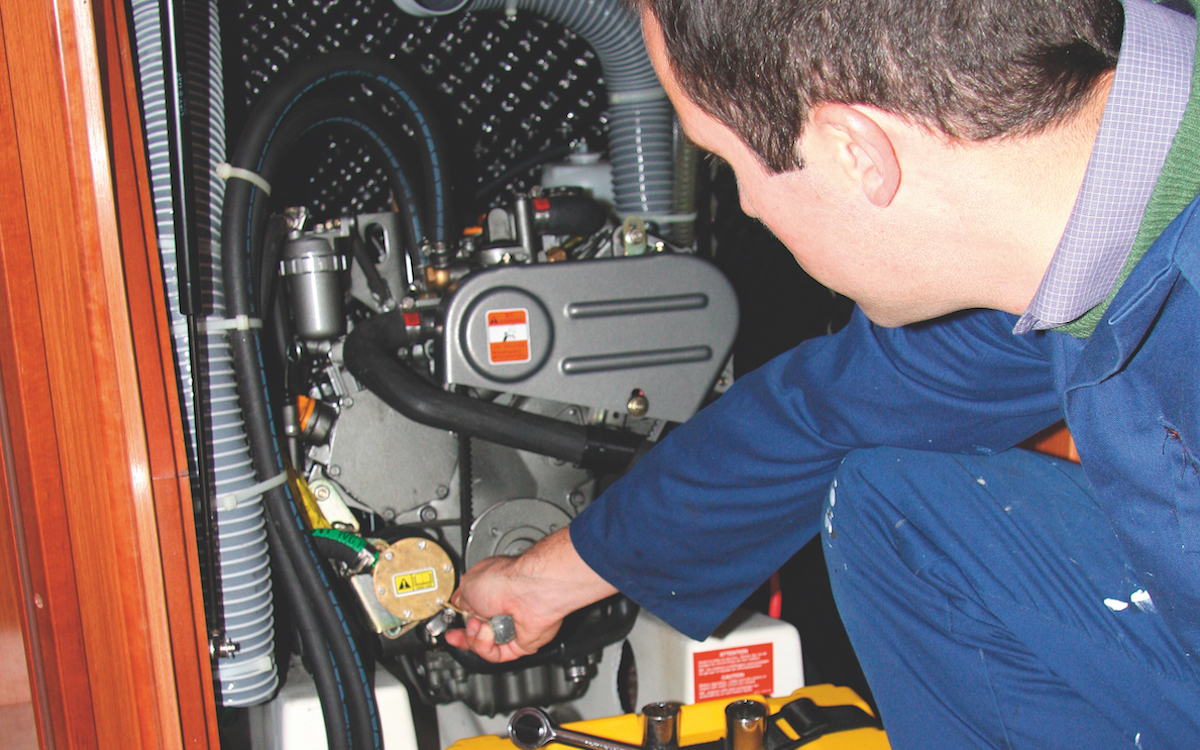Launching your boat might feel a bit daunting, but these simple checks from insurance broker Steve Risk will ensure your boat’s in good condition to start the season
Boat launch checks for getting back on the water
With longer, warmer days approaching, boat owners everywhere are keen to stretch their sea legs.
However, if your boat’s been out of action for several months, and especially if access has been restricted, there are some crucial steps you should take before embarking on your first trip of the season.
Even if owners have had the luxury of dry or indoor storage, issues can still arise which could result in costly repair bills and lengthy time out of the water.
Some preventative boat maintenance will give you peace of mind before putting the boat into water, extend your boat’s lifespan, and ensure the safety and security of those on board.
1 Carry out engine checks and servicing
Engines should ideally be serviced by a specialist marine engineer each year to help prevent breakdowns on the water. A full service usually includes cleaning and changing of oil filters, greasing gears as well as checking the gearbox oil levels, and the inspection of air filters, V-belt, impellers, anodes and batteries.

- How to service a 2-stroke outboard engine
- Clean an outboard motor carburettor
- How to service your marine diesel engine
2 Examine the sails, mast and rigging
Check your sails for wear and tear and that there’s no corrosion or damage to the mast. Look out for signs of stress or cracks that may cause issues later. Additionally, wear and tear due to movement of the rig can easily occur when a boat is moored up during the winter, so owners should clean and replace any damaged components
as required.
3 Inspect skin fittings
Regular maintenance of seacocks will prevent them seizing up (see panel, far right). Seacocks should be washed with fresh, clean water to dislodge any salt and the seals should be inspected for any signs of damage or leaks. Tapered softwood bungs should be tied to each seacock as an emergency plug.
4 Ensure electronic equipment is working and calibrated
The radio, GPS, logs and depth sounders should all be working and calibrated properly. Any moisture that has built up over the winter months can harm onboard electronic equipment, therefore it’s vital to inspect and test any electronic devices thoroughly for damage.
5 Make sure the gas and ventilation system is safe
Gas rubber piping has a service life of five years, and has its date stamped on it. In the event that it’s out of date, or has no date on it, the piping needs to be replaced as a matter of urgency.
6 Clean the exterior

Thoroughly cleaning a boat’s exterior and brightwork can help support the integrity of the boat’s mouldings, preventing structural damage to windshields or fibreglass. Use a marine-specific cleaning product to remove dirt and mould that might have accumulated over the season. Apply a quality marine polish to finish.
7 Clean the interior
You should also inspect the interior closely, looking out for signs of damage, mould or dirt on the upholstery, vinyl and canvas. Clean the affected areas, and arrange for repairs if appropriate
8 Inspect safety equipment
It’s important to check that lifejackets are safely stowed away, yet within easy reach, and that they’re in good condition. Ensure that flares and fire extinguishers are in date, and that liferafts have been serviced.
9 Check the cooling system
An inefficient freshwater cooling system can lead to overheating, breakdown and potential engine damage, so it’s important to check for any leaks, blockages, malfunctioning thermostats or corrosion, as well as replacing the antifreeze.
10 Check your insurance
If you don’t have up-to-date boat insurance, you’re leaving yourself exposed to potentially significant costs in the event of an unforeseen incident. A specialist insurance broker will help ensure you have appropriate insurance tailored to your specific needs, as well as providing access to risk management advice to help prevent any potential claims.

Steve Risk of Coleman Marine
About the author
Steve Risk is the MD of Coleman Marine Insurance, a Gallagher Company, providing bespoke solutions for all aspects of yacht, motorboat, superyacht, commercial craft and trade insurance.
PBO Essential Boat Maintenance Manual
Find out how to maintain and service every part of your boat with the PBO Essential Boat Maintenance Manual. It’s available from magazinesdirect.com for £12.99.
More expert advice from the PBO archives
- Three ways to revive faded gelcoat
- Which battery is best for my boat?
- Renovating old windows
- 12 of the best lithium boat batteries
- How to check for leaks on your boat
Enjoyed reading Boat launch checks?
A subscription to Practical Boat Owner magazine costs around 40% less than the cover price.
Print and digital editions are available through Magazines Direct – where you can also find the latest deals.
PBO is packed with information to help you get the most from boat ownership – whether sail or power.
-
-
-
- Take your DIY skills to the next level with trusted advice on boat maintenance and repairs
- Impartial in-depth gear reviews
- Practical cruising tips for making the most of your time afloat
-
-





